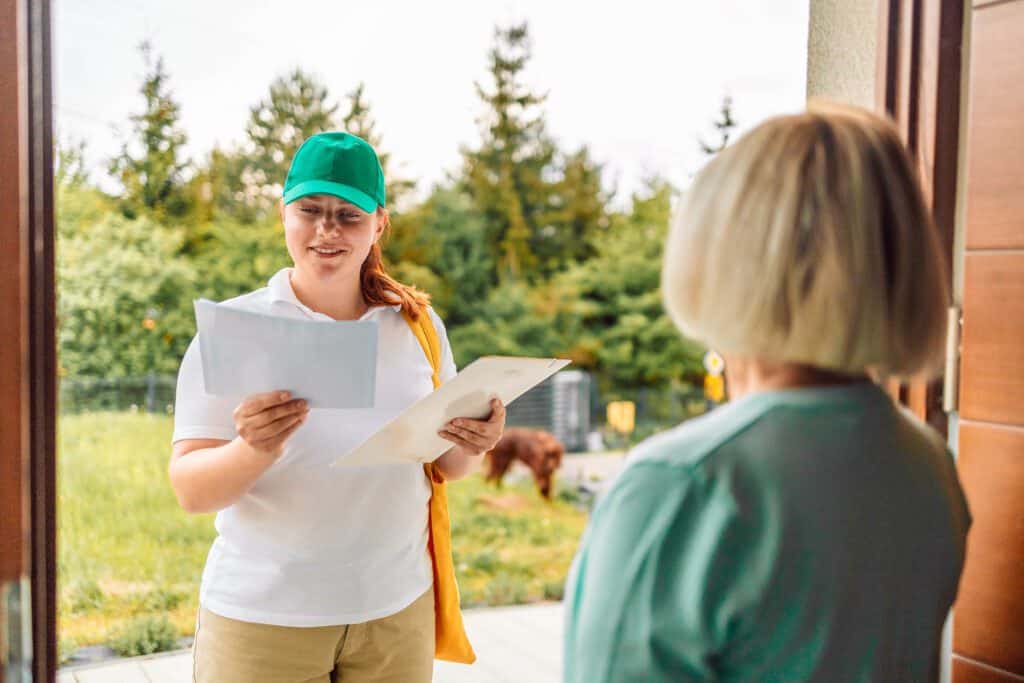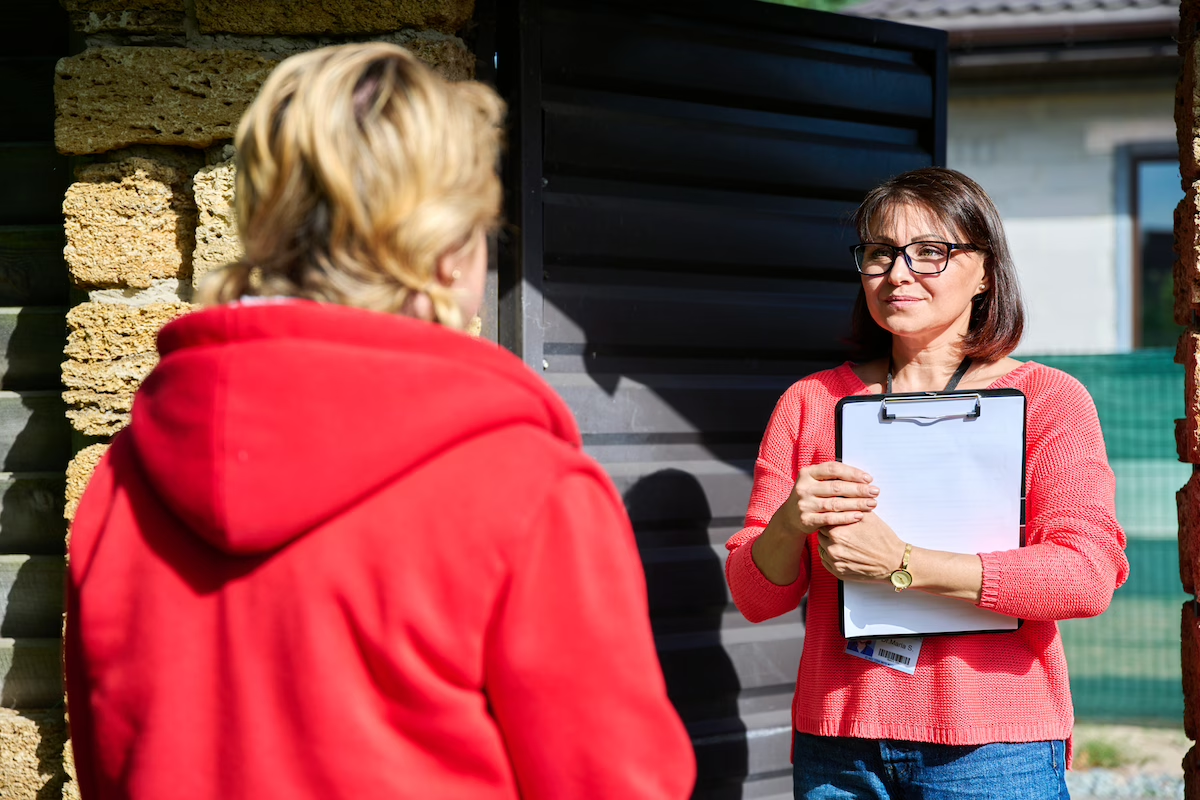Political canvassing is a vital part of any campaign. It allows candidates and volunteers to connect directly with voters, share their message, and engage in meaningful conversations. However, as political environments become more charged, many people are asking: Is political canvassing safe?
While political canvassing does come with certain risks, these risks can be minimized by following best practices and taking precautions. We have created an overview of the potential risks of canvassing, as well as the safety measures campaigns can adopt to ensure the well-being of both canvassers and voters.
1. Understanding the Risks of Political Canvassing
Political canvassing, like any public-facing activity, carries some risks. These include:
- Personal safety concerns: Canvassers may face hostility or political tensions in neighborhoods where political views differ sharply.
- Unexpected situations: Canvassers may encounter aggressive pets, hazardous environments, or difficult weather conditions.
- Voter discomfort: In some areas, voters may be wary of opening their doors to strangers, making canvassers feel uncertain about how they will be received.
While these risks are real, campaigns can mitigate them by implementing clear safety protocols and preparing canvassers to handle difficult situations.
2. Personal Safety Measures for Political Canvassing
Personal safety is a top priority for canvassers, especially when they’re engaging with strangers in unfamiliar neighborhoods. However, campaigns can take simple steps to ensure that canvassers feel safe while carrying out their duties.
Here are some key personal safety measures for political canvassing:
- Canvass in Pairs: One of the most effective safety strategies is to canvass in pairs. Having a partner provides security, allows for quick assistance in case of an emergency, and makes canvassing more enjoyable. Teams can watch out for each other, especially in unfamiliar or remote areas.
- Be Aware of Your Surroundings: Canvassers should remain alert and mindful of their surroundings at all times. Pay attention to environmental factors, such as unlit streets, isolated homes, or even unfriendly pets. If something feels unsafe, it’s better to skip the house or street altogether.
- Use Technology to Stay Connected: Many campaigns now use mobile apps or tracking systems that allow campaign managers to monitor the real-time location of canvassers. This system adds an extra layer of safety, ensuring that someone knows where canvassers are throughout the day.
- Avoid Canvassing After Dark: Canvassing during daylight hours not only improves visibility but also makes interactions with voters more comfortable. Voters are often more willing to open their doors during the day, and it reduces the risk of encountering unsafe situations.
- Have an Exit Strategy: If a situation becomes uncomfortable or potentially unsafe, canvassers should have a clear exit strategy. This means being prepared to politely disengage from hostile or unresponsive individuals and move on to the next home without lingering.
By following these personal safety practices, canvassers can reduce risks and focus on positive voter interactions.
3. Handling Political Hostility
In today’s politically charged climate, canvassers may occasionally encounter voters who are hostile or strongly opposed to the candidate they represent. Handling these situations with grace and professionalism is crucial to staying safe.
Here’s how canvassers can manage political hostility effectively:
- Stay Calm and Respectful: If a voter disagrees with your candidate, it’s important to remain calm and polite. Engaging in arguments or confrontations can escalate the situation. A respectful response and an acknowledgment of their views can help defuse tension.
- Know When to Leave: If a voter becomes hostile or aggressive, it’s best to leave immediately. Canvassers should never feel obligated to stay in a situation where they feel unsafe. Politely thank the person for their time and move on to the next house.
- Don’t Take It Personally: Canvassers may encounter people with strong political opinions. It’s important not to take these reactions personally. Focus on those who are open to conversation rather than trying to persuade those who are not.
Training canvassers to deal with hostility ensures that they remain safe while still effectively spreading the campaign’s message.
4. Alternative Canvassing Methods
For those who are still concerned about the safety of in-person canvassing, there are alternative outreach methods that can be just as effective in reaching voters:
- Phone Banking: Calling voters is a safe way to engage in direct conversations without the risks associated with door-to-door canvassing. It allows canvassers to discuss key issues and share information in a more controlled environment.
- Text Messaging: Campaigns can send personalized text messages to voters, providing a safe and efficient way to share information and encourage voter engagement without any physical contact.
- Virtual Canvassing: With the rise of digital communication, campaigns can now connect with voters through email, social media, and online events. Virtual town halls and webinars allow candidates to interact with their constituents without face-to-face contact.
These alternative methods allow campaigns to continue voter outreach while addressing safety concerns.
Conclusion
So, is political canvassing safe? Yes, with the right precautions. While canvassing carries certain risks, campaigns can implement safety measures to protect their volunteers and staff. By canvassing in pairs, staying aware of surroundings, using technology, and maintaining a professional demeanor when faced with hostility, canvassers can significantly reduce risks and have a positive experience.
If in-person canvassing still feels unsafe, campaigns can turn to alternative outreach methods like phone banking or virtual canvassing to maintain voter engagement. With thoughtful planning and attention to safety, political canvassing remains a powerful tool for connecting with voters and driving campaign success.
Focus Keyphrase: Is political canvassing safe
Meta Description: Is political canvassing safe? Learn about the potential risks, personal safety measures, and alternative canvassing methods that ensure canvassing is done securely and effectively.





